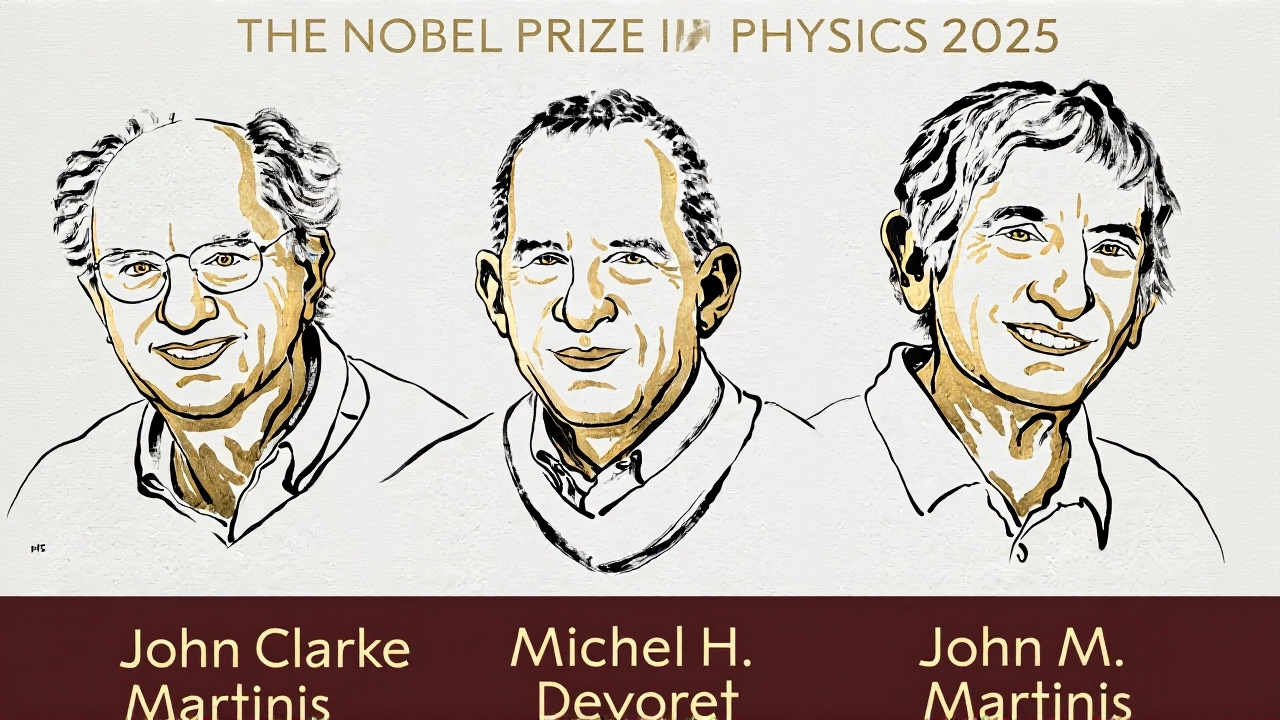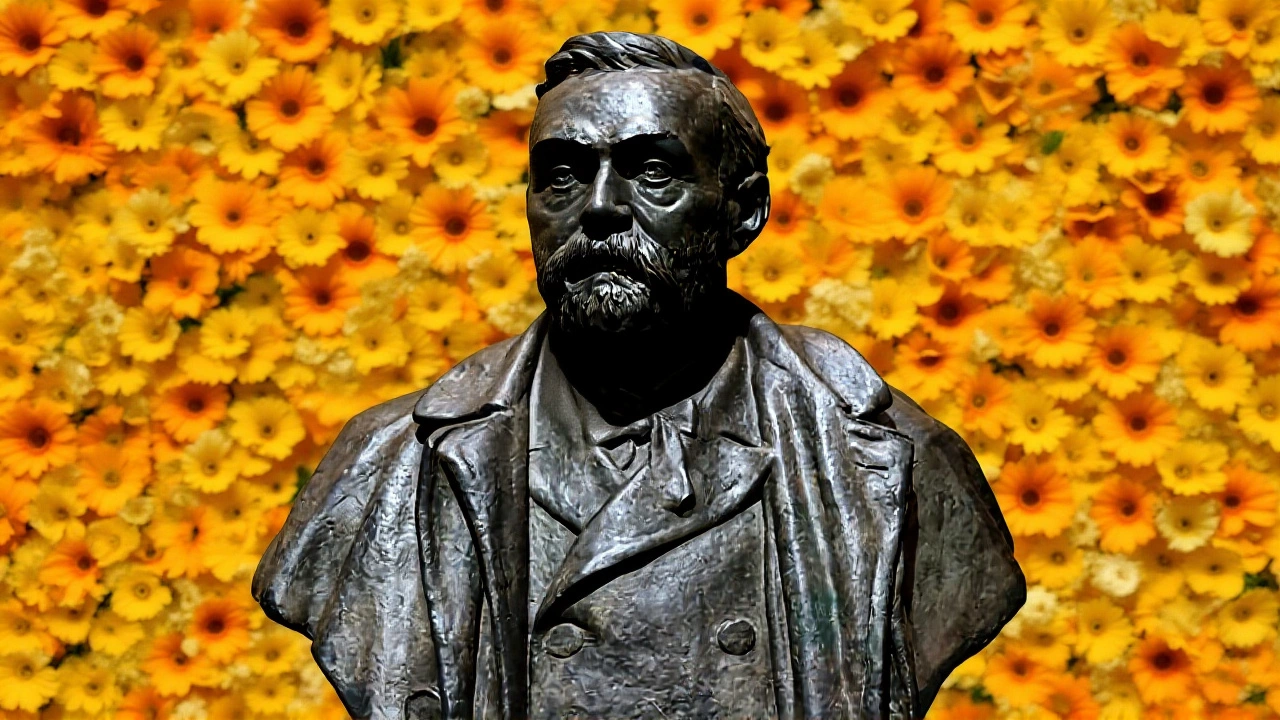When John Clarke, professor at University of California, Berkeley heard that the Nobel Prize in Physics 2025 would be awarded on , he barely blinked. The Royal Swedish Academy of Sciences announced the prize for three pioneers – Michel H. Devoret, professor at Yale University and University of California, Santa Barbara, and John M. Martinis, also of University of California, Santa Barbara. Their work proved that quantum tunnelling and energy quantisation aren’t confined to the sub‑nanometer world – they can be seen in macroscopic electronic circuits.
Background: When Quantum Meets the Everyday
Quantum mechanics has long been the playground of physicists probing atoms and photons. Yet translating those weird effects to objects you could hold in your hand seemed like science fiction. The key obstacle was decoherence – the tendency of quantum states to collapse when interacting with the environment. By the early 2000s, superconducting circuits – loops of material that conduct electricity without resistance at cryogenic temperatures – offered a promising platform.
In 2002, a modest team at the University of California, Santa Barbara built a simple circuit consisting of a Josephson junction, a tiny tunnel barrier sandwiched between superconductors. That same year, researchers at Yale, led by Michel H. Devoret, began experimenting with similar structures, aiming to observe quantised energy levels directly.
The Laureates and Their Path to Discovery
John Clarke entered the scene in 2005 when his group at Berkeley fabricated the first SQUID (Superconducting Quantum Interference Device) that could be tuned to detect single‑photon microwave signals. Meanwhile, John M. Martinis refined the circuit geometry, reducing noise to unprecedented levels. By 2010, the trio’s collaborative experiments showed clear signatures of macroscopic quantum tunnelling – electrons collectively “tunnelling” through an energy barrier that would be impossible for a classical current.
In a 2014 paper, the team reported energy quantisation steps spaced at exactly 6.2 GHz, matching theoretical predictions to within 0.3 %. That result convinced the broader community that superconducting circuits could serve as artificial atoms – the building blocks for quantum computers.
"It felt like watching a cat walk on a tightrope made of light," recalled Michel H. Devoret in a post‑award interview. "The mathematics said it was possible, but seeing the discrete jumps on a meter‑scale chip was surreal."
What the Nobel Committee Honored
The committee’s citation highlighted "the discovery of macroscopic quantum mechanical tunnelling and energy quantisation in an electric circuit" – a mouthful that packs three historic milestones. First, it confirmed that a quantum state can span an entire circuit, not just a single particle. Second, it demonstrated tunnelling at a scale visible under an electron microscope. Third, it opened a practical route to manipulate quantum bits (qubits) using well‑understood electronic engineering.
Committee chair Thérèse Sjöberg said, "These experiments bridge the gap between foundational physics and technologies that will redefine computing, sensing, and secure communications."

Implications for Quantum Technologies
Today, the global quantum‑computing market is projected to exceed $35 billion by 2030. The three laureates’ discoveries underpin most commercial superconducting qubit designs, including those from IBM, Google, and Rigetti. Their work also fuels quantum‑sensing devices capable of detecting magnetic fields weaker than a trillionth of a Tesla – useful in medical imaging and mineral exploration.
- Quantum computers: The ability to control macroscopic tunnelling directly translates to longer coherence times, a key metric for error‑corrected processors.
- Quantum sensors: Energy quantisation provides a natural frequency standard, improving clock stability for navigation systems.
- Fundamental physics: Macroscopic quantum states allow tests of decoherence models that could hint at new physics beyond the Standard Model.
Industry analysts note that the Nobel recognition may accelerate funding for next‑generation cryogenic fabs. In Europe, the Quantum Flagship already earmarked €1 billion for "macroscopic quantum devices" in its 2024‑2027 roadmap, a move now seen as vindicated by the prize.
Looking Ahead: Future Research and Applications
While the laureates have solved the tunnelling‑quantisation puzzle, many questions remain. Can macroscopic quantum states be integrated with photonic circuits for room‑temperature operation? Will topological superconductors provide even more robust qubits?
Next month, a symposium in Stockholm will feature a panel where John Clarke and John M. Martinis discuss "From Lab Bench to Commercial Chip". Their outlook is cautious optimism: "We’ve shown the principle works; now it’s a matter of engineering scale and reliability," said Martinis.
For students and early‑career scientists, the story is a reminder that breakthroughs often arise from patience, cross‑institution collaboration, and a willingness to chase "impossible" phenomena.
Frequently Asked Questions
How does this Nobel award affect quantum computing development?
The recognition validates superconducting qubits as a leading platform, prompting governments and venture capitalists to increase funding. Expect more large‑scale fabrication plants and faster road‑to‑market timelines for quantum processors in the next five years.
What exactly is macroscopic quantum tunnelling?
It describes a quantum‑mechanical phenomenon where an entire superconducting circuit, containing billions of electrons, passes through an energy barrier that would be unsurmountable for a classical current. The effect is measurable as a sudden change in the circuit’s magnetic flux.
Who are the other key players behind the discovery?
While Clarke, Devoret and Martinis led the experiments, dozens of post‑doctoral researchers, engineers, and technicians contributed. Notable collaborators include Sanket Das (UC Santa Barbara) who designed the cryogenic measurement setup, and Laura Chen (Yale) who performed the data analysis.
When will the Nobel ceremony take place?
Following tradition, the formal award ceremony is scheduled for in Stockholm, Sweden, where the laureates will receive their medals from King Carl XVI Gustaf.
What are the next big challenges in macroscopic quantum physics?
Researchers aim to achieve quantum coherence at temperatures above 1 K, integrate superconducting circuits with photonic networks, and explore topological materials that could protect qubits from decoherence without complex error‑correction codes.

Write a comment